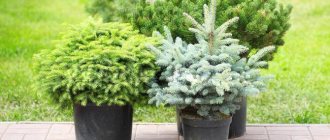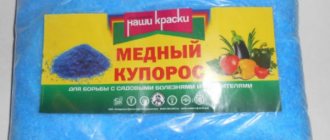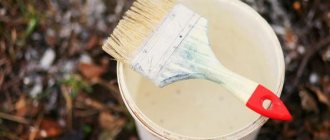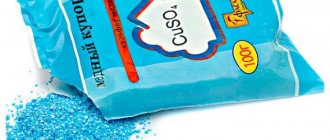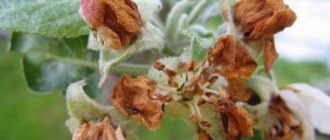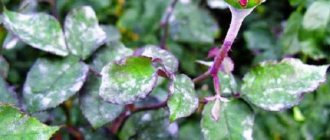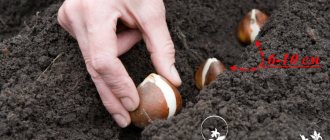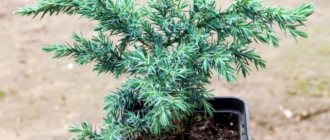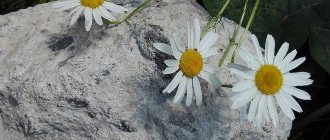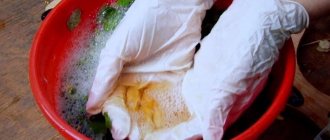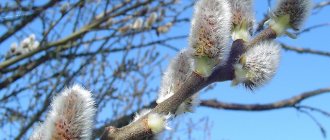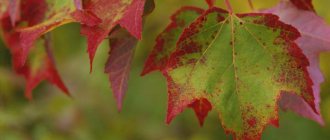What is urea
Urea is a product of the synthesis of two chemical substances. Its formula includes ammonia and carbon dioxide. It is also called urea. It looks like white granules. The granules have a crystalline structure and are odorless. This nitrogen-containing compound is useful for the following types of garden crops:
- apple trees;
- drain;
- apricot;
- gooseberries;
- strawberries, wild strawberries, raspberries;
- all vegetables.
Important!
Nitrogen can destroy any pest and prevents fruits from rotting. You can also use alcohol and ammonia in the garden.
What does urea treatment provide?
Urea has found application in gardening as an organic fertilizer with mineral components. The action of this concentrate is fast, and it retains its properties for a long time. Its weathering also occurs quickly. Urea needs to be treated not only with foliage and tree trunks, but also with the soil. For the same reason, it is added to greenhouse and greenhouse soil. When used correctly, the substance stimulates the growth and development of plants, feeding them with the nitrogen necessary for their full life.
Treating trees with urea in the fall is safe. In autumn, the foliage will not burn if the concentration of the substance is slightly higher than normal. Trees and plants absorb nitrogen better after harvesting: during the summer season, all crops lose a lot of strength. They need useful substances that will support them during the transition to a state of suspended animation.
Urea inhibits vegetation processes and prevents early flowering in spring. There are varieties of plums, apricots and peaches that ripen early. For them, autumn treatment is necessary so that they do not bloom during the period of dangerous spring frosts.
After treatment with urea, harmful insects and fungal spores die. If there are old stumps on the site, urea will help get rid of them. Under its influence, stumps decompose and rot faster.
Attention!
When using urea, lime, chalk and superphosphates should not be added to the soil.
Precautions during work
Spraying apple trees with urea is an indispensable procedure for the health and longevity of trees. Processing plants requires strict adherence to safety rules. Substances useful for garden crops have a negative effect on the condition of human skin and respiratory tract. It is important to do everything possible to protect your own health:
- eyes are protected with special glasses;
- gloves with a rubberized surface are put on your hands;
- For respiratory safety, a mask or respirator is used.
Spraying is carried out with an automatic or manual sprayer. It is important that the solution is supplied from a distance of 75 cm or more.
Do not allow the product to come into contact with the skin and mucous membranes. After work, wash your hands and face thoroughly with warm water and laundry soap. It is not recommended to use soaps with fragrances. It contains chemicals that can react with the components of the solution. This will lead to unpredictable consequences. The mouth is rinsed with running water.
It is unsafe for health to spray fertilizer in windy weather. You should not do this type of work for more than 5 hours in a row. It is important to ensure that there are no people nearby without protective clothing or pets.
Features of nitrogen prevention in autumn
When spraying the garden with urea in the fall, you need to follow a number of rules. The soil is carefully loosened, old bark and dry branches are removed from the trees. The treatment is carried out in good weather conditions, on a clear and windless day. For complete spraying, it is better to buy a spray bottle. It is very convenient: when using it, you can reach the tallest tree.
When working with urea, you need to monitor how much of the substance gets on trees, plants and soil. It is important to follow the rules for its use so as not to harm garden crops.
If urea treatment is carried out in the fall, the likelihood of rain or other precipitation is high. After rain, the procedure will have to be repeated, because the water washes away all the beneficial substances. Trees should be sprayed during the second phase of leaf fall or after it ends.
When is the treatment carried out?
The timing of the procedure depends on the climatic conditions of the region. In spring, for example, you need to focus on the beginning of flowering of trees. In autumn, procedures are tied to the fall of leaves. Regardless of this, spraying is carried out 2 times a year.
Spring treatment
Early spring spraying of the garden can be done immediately after thawing. But often the procedure is carried out during flowering or immediately after it.
Much depends on the situation. So, the thicker the foliage on the trees, the sooner all procedures should be completed. For example, if there are young leaves on pears and plums, treatment can be carried out even in late spring or early summer.
Early spraying has its advantages, since it is an effective preventive measure against various pests and at the same time protects young shoots from freezing.
Autumn processing
When spraying fruit trees in autumn, it is important to ensure that the urea solution gets evenly over the entire surface of the crown and the area of soil in the tree trunk circle. This will help protect plants, increase their immunity so that they can survive the winter, and neutralize potential foci of infectious diseases.
The procedure is usually carried out after the leaves fall. If the plant has signs of disease, then additionally spray the trunks and fallen leaves, increasing the standard concentration of the solution. The optimal time for the procedure in most regions is mid-November, and in some the end of the month. Earlier treatment will only lead to leaf burns and frost resistance will decrease.
How to prepare urea for spraying
Preliminary calculations show that for 10 liters of water you need to take approximately 0.5 kg of urea. The composition is mixed and filtered 2-3 times through gauze.
700 g of urea and 50 g of vitriol diluted in 10 liters of water are good for diseases caused by harmful insects. The mixture nourishes the soil and destroys all pests.
For your information!
When the temperature drops to -5C, spraying with urea will be ineffective.
Elimination of diseases
Spraying the garden with urea helps eliminate the following diseases:
- all types of spots;
- scab;
- monilial burns.
The solution is diluted in the same concentration that is used to control insects. The composition is watered on the leaves of trees and shrubs. Fungal spores in sprayed foliage quickly die.
Important!
When leaves fall, they also need to be sprayed with a solution. Pathogens may remain in them.
Safety precautions
The work is carried out using a special spray gun, which thoroughly sprays the necessary substances. To protect your health from the negative effects of pesticides, you should take the following precautions:
- prepare and spray the solution only while wearing protective gloves, goggles and a respirator;
- all work is carried out only on a windless, dry day;
- After completing the procedures, you must thoroughly wash your hands and face, and immediately wash all work clothes.
Safety regulations are mandatory to follow.
Application to the soil
If garden crops lack nitrogen, they grow poorly and their foliage turns yellow and curls. In severe cases, a critical drop in yield with early fruit shedding is observed.
You may be interested in:
How and when to feed peppers with urea You can often hear that when growing peppers you should not overuse nitrogen. The statement is correct, but at the same time it is necessary...Read more...
There are several dosages of urea that are used when treating gardens and vegetable gardens with urea:
- potatoes, onions, tomatoes, all types of cabbage, peppers - from 20 to 25 g per 1 m2;
- cucumbers, all types of legumes - from 5 to 8 g per 1 m2;
- gooseberries - 10 g of substance per 10 liters of water;
- blackberries, wild strawberries, strawberries - 35 g of urea per 10 liters of water (1 liter of solution for each bush);
- for zucchini and eggplant you will need from 10 to 12 g of urea per 1 m2;
- for currants - 20 g per 10 liters of water.
Timing of urea treatment in autumn
It is better to start processing in late autumn, when the leaves fall from the trees. Gardeners consider the optimal time for the procedure to be the end of October and the beginning of November. At this time, harmful insects begin preparing for winter, so they need to be destroyed as quickly as possible.
Advice!
After treatment with urea, tree trunks can be whitened. Whitewashing disinfects and helps protect against cold.
Features of autumn eradicating spraying of the garden
Many gardeners traditionally carry out early spring spraying of still dormant plants for this purpose. But the second half of autumn (before the onset of frost) is quite suitable for this. In addition, cold autumn weather is more comfortable for gardening than spring mud after melting snow. And in many regions, you need to remember that spring can come quickly, and the right moment in the bustle of gardening activities will be missed.
So, late autumn, but before the onset of frost, is perhaps the most successful period for carrying out so-called eradicating treatments in the garden. The main thing to remember is that the foliage on the plants should completely fall off, and the optimal temperature for spraying is +5 degrees.
And here it is important to study the recommendations for the use of a particular chemical - at what temperature is it best to use it? Let's say, some work at temperatures above +10 degrees, and for autumn eradicating spraying this is not the most optimal temperature.
As a rule, in late autumn they use contact-action drugs, according to the principle: if they hit spores, eggs or larvae, they kill them. Therefore, it is very important during such treatments to wet trees and shrubs completely and abundantly, from the crown to the bottom of the trunk. Moreover, it is worth treating the near-trunk circle of the plant. If something is missed somewhere, then even a small area with overwintering spores will give life to a fungal disease in the spring, and the surviving larva or egg-laying will give rise to new generations of pests.
The best option is to use modern gasoline or electric sprayers for treatment, capable of creating a fine mist of preparations that penetrates into the smallest pores and cracks of the bark. In some cases, special adhesive preparations can help, ensuring good contact between the chemical and the plant bark.
The best option is to use modern gasoline or electric sprayers for processing.
Reviews
Vitaly (Rostov):
“This summer, a scale insect attacked the apple orchard. We managed to save the harvest, but I was afraid that the pest invasion would happen again next year. A friend advised treating the trees with urea. I have always been against “chemistry,” but he explained to me that urea is organic, but with mineral elements in its composition. Last fall I processed all the apple trees without missing a single detail. I sprayed foliage, bark and even the ground around the trees with a spray bottle. The trunks of the apple trees were whitened. In spring, the trees seemed to come to life, the flowering was simply fabulous. The apples grew huge and juicy, and there were no more pests in such numbers.”
Elmira (Kazan):
“I have a summer cottage where gooseberry bushes grow. Over time, the berries became smaller. Later, I noticed that my gooseberries had become completely frail: the leaves turned yellow ahead of time, fell off and curled. It turned out he lacked nitrogen. In the fall I treated all the bushes with urea. Before processing, I thinned out the bush and cut off dry and diseased branches. The next year the gooseberries turned green, as if for the first time. The berries were not very large, but there were much more of them. Now I will regularly carry out this treatment every autumn.”
Urea or carbamide is a useful substance that is necessary for trees, shrubs and plants. With regular and proper treatment, it will destroy all pests and help preserve the harvest.
Personal experience
From personal experience, we can so far boast of using urea in the spring. We close the dacha season early (late September - early October), so we don’t have time to process the fruit trees in the fall. We show from personal experience:
- We poured 700 g of urea into a bucket (we chose the average dosage) and filled it with water at room temperature (not ice). Nranulas will dissolve better if you take warm water.
2. We always spray the garden with a Zhuk sprayer - it’s very convenient. But the problem is that if the spray nozzle becomes clogged, the job will turn into torture! Be sure to filter the solution so as not to complicate your life. A nylon stocking or gauze will help us :))
3. Spray the trees with the prepared solution. You should consider protection: Gloves, hat, glasses, medical bandage on the face. This is the wrong way to do it:
We hope we have given clear instructions for using urea (carbamide) in the garden in the fall . If possible, be sure to organize such processing. We noticed from personal experience that if you regularly spray the garden (and the arsenal of remedies is wide, both against pests and diseases), the harvest is much better. With minimal effort, for several years now our apple trees have suffered less from scab, and there are no caterpillars on our plum trees!
